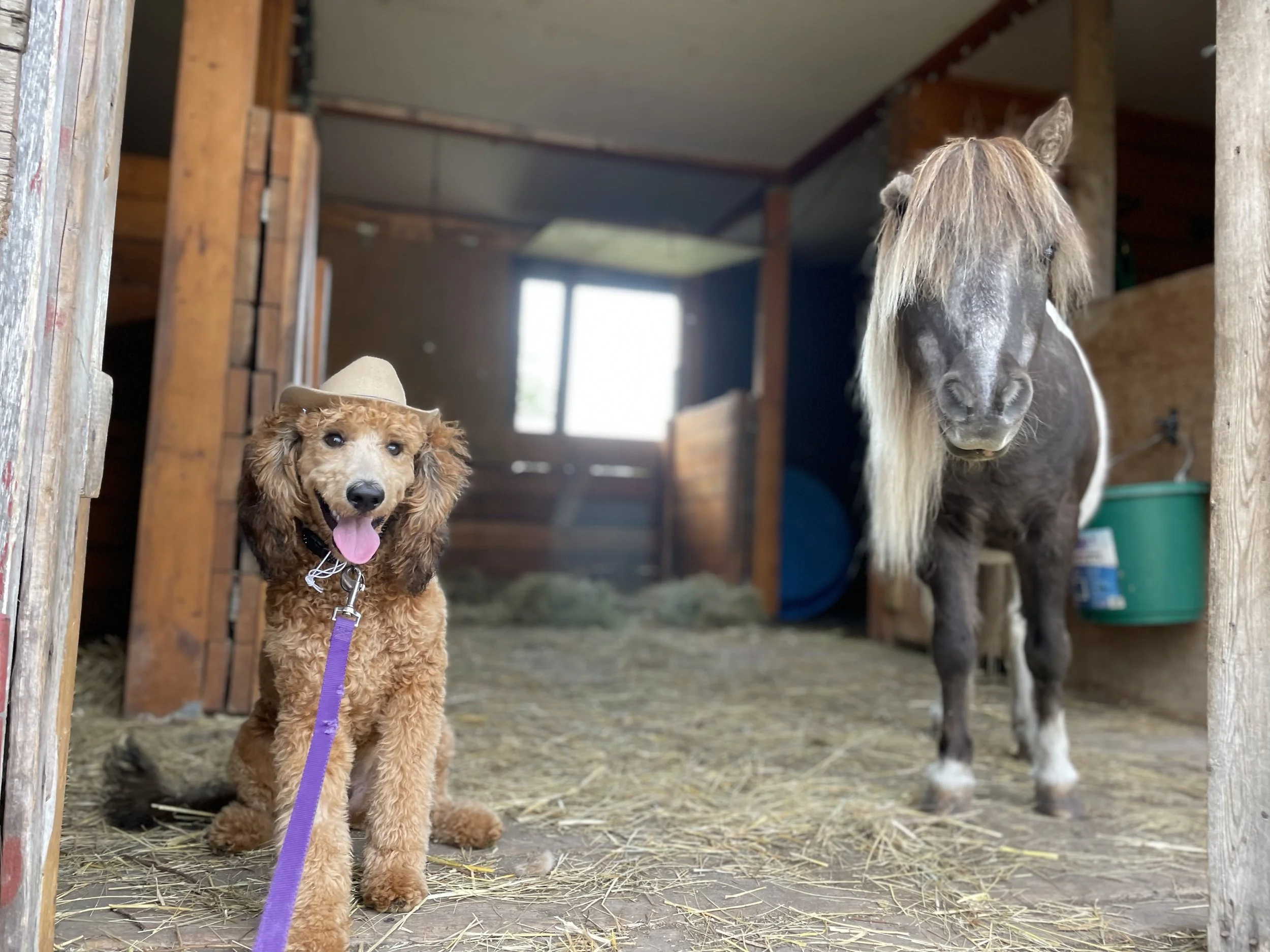Preparing for your new addition
Karma TEEGAN
CONGRATULATIONS!!!
You have made the decision to open your heart and home; to welcome a new forever friend and it is important to remember that puppies require a lot of care, attention, and most importantly, a consistent routine. Bringing your new puppy home means being prepared for the unexpected.
The following are some tips and recommendations to help simplify this process.
First, we recommend reviewing the following list(s) and visiting local pet stores to familiarize yourself and collect some of the items listed below. Purchasing these items before bringing your puppy home is always best.
Annie (photo credit: cathy wall photography)
Basic puppy needs include:
- Identification (ID Name-Tags); while your puppy has been microchipped, it is always a good idea to obtain an ID name tag for your puppy and complete registrations with the EIDAP (microchip)
- Metal food dishes; food and water dishes should be cleaned daily
o Establishing routines early, is extremely important; feed your puppy at set and regular times, daily
ALTERNATIVELY, a gravity feed water dish can also be used
- Every puppy/dog should have their very own, designated, sleeping quarters; our recommendations are:
o Petmate Ultra-Vari Dog Kennel (various sizes available)
o Midwest Folding Metal Dog Crate (various sizes available)
§ Your puppy should be able to stand comfortably and turn around within their sleeping quarters
- Exercise Pen/play pen; our recommendations are:
o Midwest Exercise Pen (various sizes available)
- > AGE APPROPRIATE < - up to 3 months
https://service.renspets.com/friend/redeem/945293682041422860_c5sm9a7kg4n03c4pqpi0?referer=RM286155
o Safety gates (to secure access to open stairways and avoid falls, and other injuries)
https://www.amazon.ca/Regalo-1164-Easy-Extra-Platinum/dp/B01GG3H08Y
- Travel safely with your puppy; consider investing in a safety seat that allows them to be protected as you drive and in case of sudden stops
- Bedding for crate/kennel use should be:
o Lightweight and easily cleaned (washable); accidents happen
o Cozy, but not too warm to avoid overheating and discomfort
o 2 sets of bedding are recommended
- Adjustable collar
- Comfortable, good fitting harness
- 6-foot leash, leather or webbing
- High quality dry food; our preferred brand is: Rolf Hagen’ Nutrience (Sub-Zero and Infusion lines)
www.nutrience.com
- Puppy litter box: lined with compressed pine pellets (we use a product called: WUNDERCAT) set-up near your preferred door to access outside, as a continuation for the first one-two months of transition training/housetraining
https://www.homehardware.ca/en/91kg-wundercat-pine-pellets-cat-litter/p/5918523?srsltid=AfmBOorcRruvTBB0CJaD1O-ltE4BbS1xhLjItxE3RQlxrGBtsys5gorm
- 5 or 6 toys (hard balls/chew-proof); AVOID tennis balls or fabric toys with puppies
https://www.petvalu.ca/product/jump-foam-tpr-ball-assorted/SCM03841CA
The following basic grooming tools are recommended for all pet-parents and should be stored in a plastic tote or container for easy access.
Tear-Free shampoo and conditioner
Recommendation: Mane & Tail Shampoo/Conditioner
Toothbrush
Recommendation: Electric toothbrushes work great
Enzymatic toothpaste
Bristle/pin brush & Slicker brush
Recommendation: https://canadiangroomingdistributor.com/collections/slicker-pin-and-bristle-brushes/products/poodle-brushing-bundle-low-scent
Nail clipper
Recommendation: https://lynnprofessional.com/andis-nail-clipper-large?srsltid=AfmBOopldGAo1JNjwWP-JEsjuTH5SW-HrFv8cd1usAMBwN04ysadcRQ3
Styptic powder
Bath towels
dharma & axl ronen
Important Notes
Housetraining Tips
Up to and including their 5-month, puppies are still experiencing shifts in their ability to control elimination (bowels and bladder control). Typically, when at rest, your puppy should be able to hold their bladder and bowel for the equivalent of one hour/month of age. After play, after eating, and immediately after waking, puppies should be guided back to their appropriate and designated elimination area (outside) as part of your housetraining routine.
Limiting access to specific parts of the house, while your puppy is housetraining will allow for easier clean-ups; remember, accidents happen but the more accidents that are prevented, the quicker your puppy will be housetrained.
Activities and Safe-Play
Puppies that live on a leash, that are confined to a crate (all-day) with little or no time to just let loose and play or investigate the world, often develop separation-anxiety issues, and result in puppies that chew or become destructive, and don't sleep well at night.
Remembering to exercise your puppy, both their body and mind, with age appropriate activities, is best. Supervised safe-play environments include a fenced yard, exercise pen,
Review your living space carefully before bringing your new puppy home to ensure that all electrical cords and cables are secure and out of reach, and that other potential hazards (ex. Chemical cleaners, etc.) have been eliminated or stored away.














